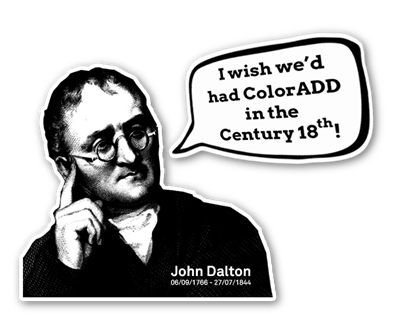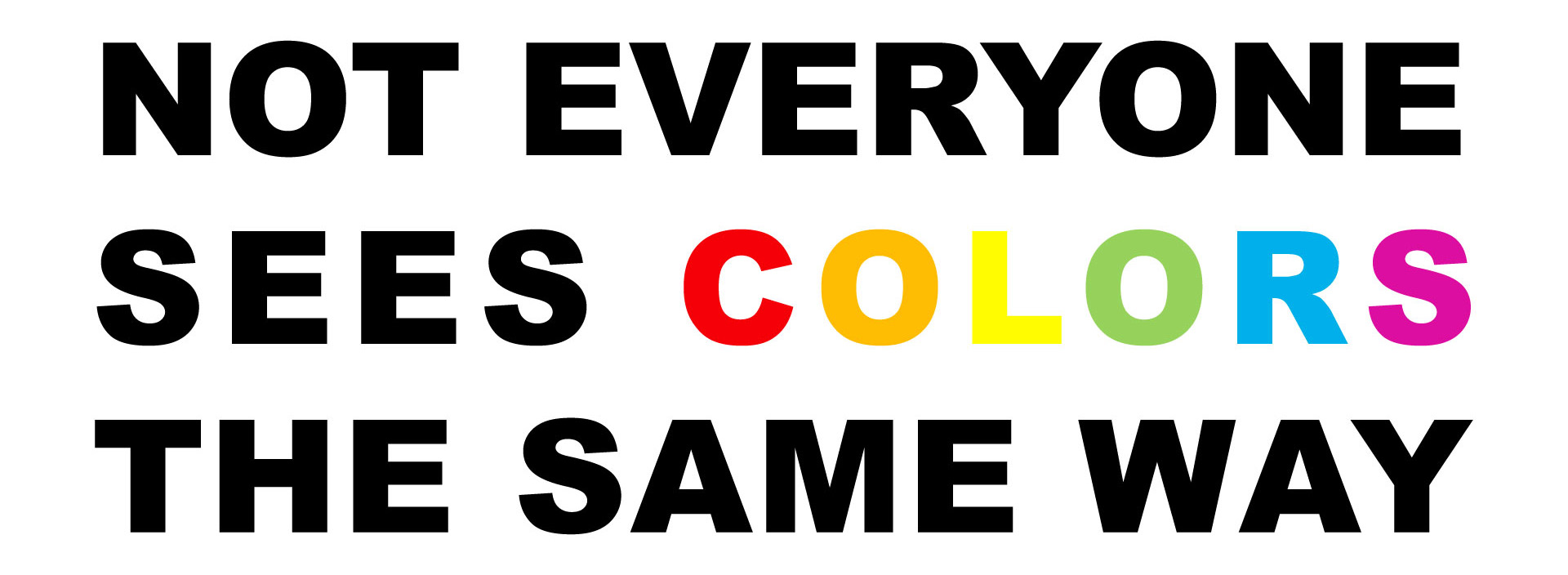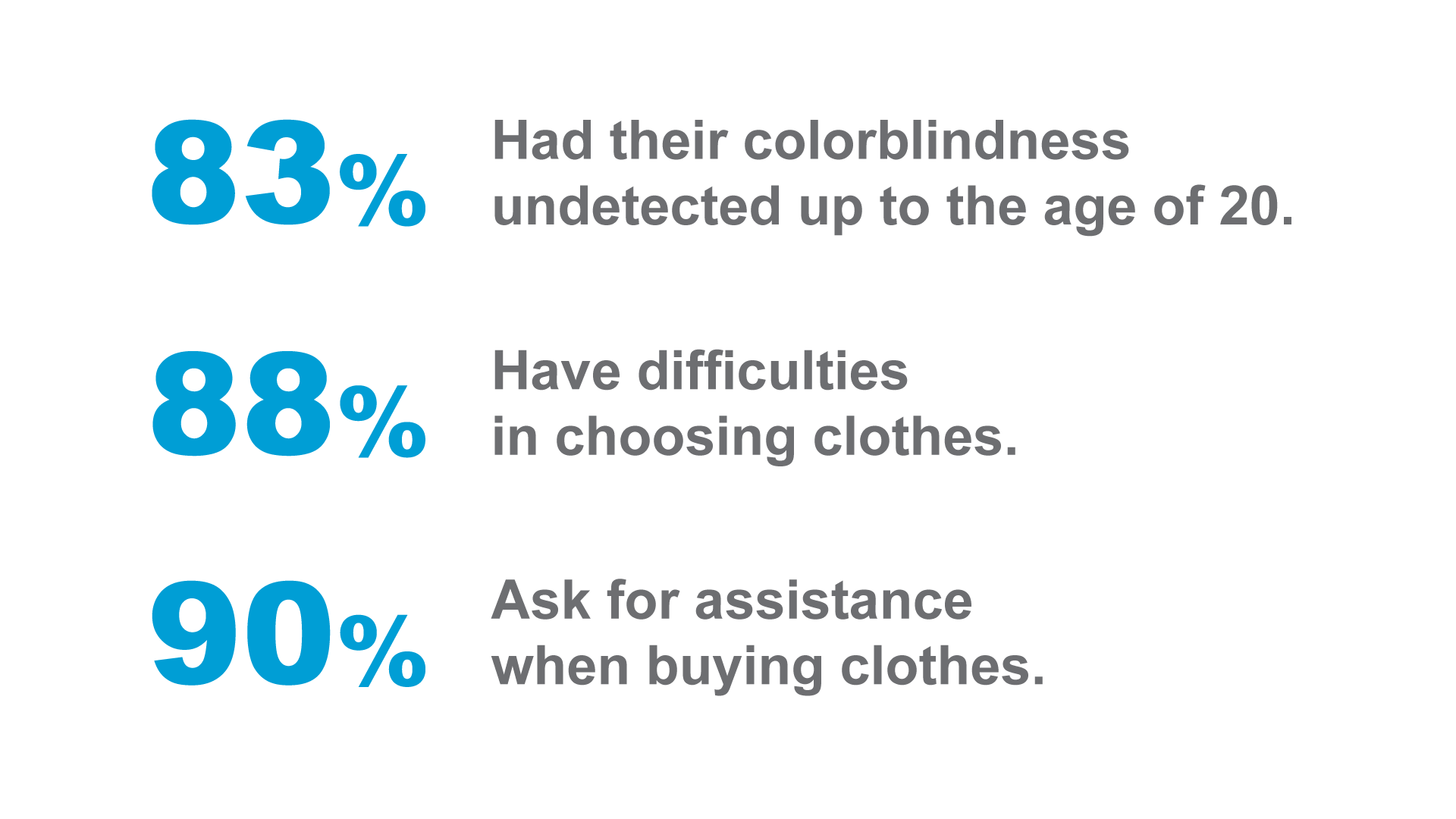

Color blindness
Color blindness is a visual insufficiency that disables the capacity of distinguishing several colors. As a result of hereditary transmission, color blindness drifts from a genetic deficiency associated with the X chromosome.
Color blindness is often called daltonism, named after John Dalton, the scientist who, in the XVIII century, first described the pathology and who was himself color blind.

The first symptoms are detected at school age
The condition of color blindness has a genetic origin related with X chromosome

Normal Vision

Color blind Vision
Color blindness affects approximately every 1 in 12 men and 1 in 200 women.
The first symptoms are detected early at school age normally related with difficulties or confusion acknowledging the different colors and already at this time the feel of social inadequacy is initiated, enhanced by the tease of the colleagues.
In time constraints are enhanced: the scope of professional possibilities decreases which may affect the personal fulfillment, while the feeling of non-integration increases.
Hermann Von Helmholtz proposes a theory describing the organic mechanism responsible for the color blind state in line with the studies of Thomas Young. The Young-Helmholtz theory, argue that the retina had specialized cells, named Cones, that were responsible for the color perception and the malfunction of these cells would cause color blindness.
Cones are less sensitive to light than the other cells in the retina but allow the perception of color. They are also able to perceive finer detail and more rapid changes in images because their response times to stimuli is faster than those of rods.
Humans usually have three kinds of cones with different photoreceptive proteins, which have different response curves and thus respond to variation in color in different ways. Changes in the protein composition of Cones, implies different color blind states.
Websites with useful information about colorblindness.
HTTPS://WWW.NHS.UK/CONDITIONS/COLOUR-VISION-DEFICIENCY/
HTTPS://WWW.FARBSEHSCHWAECHE.DE/EN/
HTTPS://WWW.COLOURBLINDAWARENESS.ORG/
HTTPS://WWW.COLOR-BLINDNESS.COM/
HTTPS://EN.WIKIPEDIA.ORG/WIKI/COLOR_BLINDNESS
There are several types of tests used to diagnose color blindness, the most used being:
There are online tests using similar techniques that may help detect a possible problem, but it's best to have a proper test at an optician if you have any concerns about your color vision.
THERE ARE DIFFERENT CONDITIONS

Deuteranopia
Affects hue discrimination in a similar way to protanopia, but without the dimming effect. Again, it is found in about 10% of the male population.

ProtanopiA
Is caused by the absence of red retinal photoreceptors and it results on difficulties distinguishing between blue and green and between red and green. It is present in 10% of males.

Tritanopia
A very rare color vision disturbance in which only the red and the green cone pigments are present, with a total absence of blue retinal receptors. Blues appear greenish, yellows and oranges appear pinkish, and purple colors appear deep red.

Monochromacy
Also known as "total color blindness", is the lack of ability to distinguish colors (and thus the person views everything as if it were on a black and white television); caused by cone defect or absence.


ColorADD® represents a disruptive innovation in the assessment of color for color blind individuals.
It is Unique, Inclusive, Universal and Transversal to society and markets.
GET IN TOUCH